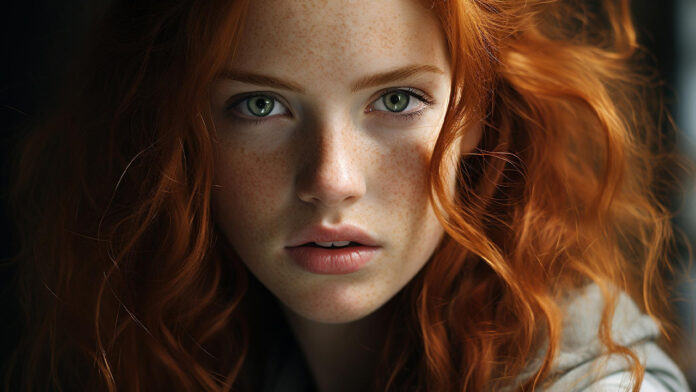Red hair, often described as fiery and captivating, holds a unique allure that has sparked fascination throughout history. From myths and legends to modern-day admiration, the world of redheads is rich with diversity and charm. In this article, we delve into the fascinating facts surrounding red hair, exploring its genetics, cultural significance, and the distinctive traits that make redheads a standout feature in the tapestry of human diversity.
The Genetics of Red Hair
The MC1R Gene: The genetic basis for red hair lies in the MC1R gene, responsible for producing a pigment called pheomelanin. When the MC1R gene is mutated or activated in a particular way, it results in the production of red or orange hair.
Rarity of Red Hair: Red hair is a rare genetic trait, occurring in approximately 1-2% of the global population. The concentration of redheads is higher in certain regions, such as Scotland and Ireland, where the prevalence is around 13% and 10%, respectively.
Cultural Symbols and Myths
Ancient Beliefs: In various ancient cultures, red hair was often associated with different mythological figures and deities. For example, the Norse trickster god Loki was believed to have red hair, symbolizing his mischievous and unpredictable nature.
Superstitions and Legends: Throughout history, red hair has been linked to superstitions and folklore. In medieval Europe, red hair was sometimes thought to be a mark of witchcraft, while in other cultures, it was seen as a sign of good luck.
Unique Traits of Redheads
Pain Sensitivity: Studies suggest that redheads may have a different pain threshold compared to individuals with other hair colors. Research indicates that redheads may be more sensitive to certain types of pain, such as thermal pain.
Sun Sensitivity: Redheads are often more sensitive to sunlight due to the fair skin that often accompanies red hair. The MC1R gene not only influences hair color but also affects the skin’s response to UV radiation, making redheads more susceptible to sunburn.
Famous Redheads
Queen Elizabeth I: One of history’s most iconic redheads, Queen Elizabeth I of England, was known for her fiery red hair. Her reign is often referred to as the Elizabethan Era, a period of cultural and artistic flourishing.
Vincent van Gogh: The renowned Dutch painter Vincent van Gogh was also a natural redhead. His self-portraits, featuring his distinctive red hair and beard, are celebrated works of art.
Red Hair in Pop Culture
Characters in Literature: Red hair has often been used to depict characters with unique personalities in literature. From Anne Shirley in “Anne of Green Gables” to Ron Weasley in the “Harry Potter” series, redheaded characters are celebrated for their individuality.
Redhead Appreciation in Media: In recent years, there has been a growing appreciation for red hair in media, with redheaded models, actors, and musicians challenging traditional beauty standards. This shift reflects a broader recognition of the beauty and uniqueness of red hair.
Redhead Day Celebrations
International Redhead Day: International Redhead Day, celebrated annually on the first weekend of September, is a global event that brings redheads together to celebrate their unique hair color. Festivals, gatherings, and events take place to honor the diversity of red hair.
Positive Representation: Redhead Day celebrations aim to promote positive representation and challenge stereotypes associated with red hair. It’s a time for redheads to embrace their distinctive features and celebrate their shared identity.
The Evolutionary Puzzle
Adaptation to Climate: The evolutionary origins of red hair remain a subject of scientific inquiry. Some theories suggest that red hair may have provided an evolutionary advantage in certain climates, such as colder regions, where the fair skin associated with red hair could aid in the production of vitamin D.
Sexual Selection: Another theory proposes that red hair may have been favored through sexual selection, with individuals expressing red hair being perceived as more attractive mates. This could have contributed to the prevalence of the trait in certain populations.
The Redhead Personality Stereotype
Fiery Temperament: Redheads have often been stereotyped as having fiery tempers and strong personalities. While this stereotype is not universally accurate, it persists in popular culture, adding to the mystique surrounding redheads.
Individuality and Confidence: Many redheads embrace their unique traits and use their hair color as a symbol of individuality and confidence. The perception of red hair as a distinctive and attractive feature has challenged negative stereotypes.
Red Hair in Modern Genetics
Genetic Variability: The inheritance of red hair is a complex genetic trait influenced by multiple genes, not solely the MC1R gene. This complexity contributes to the variability in shades of red hair, ranging from strawberry blonde to deep auburn.
Genetic Associations: Studies have explored potential genetic associations between red hair and other traits, such as increased pain sensitivity and resistance to certain diseases. The ongoing exploration of the genetics of red hair continues to uncover new insights.
Conclusion: A Spectrum of Shades and Stories
In conclusion, red hair is not just a color; it’s a vibrant spectrum that weaves together tales of genetics, culture, and individuality. From ancient beliefs to modern celebrations, redheads have carved out a unique space in the diverse landscape of human characteristics. Whether challenging stereotypes, embracing cultural symbols, or celebrating International Redhead Day, the world of redheads invites us to appreciate the beauty of diversity and the fascinating stories that make each redhead truly one of a kind.

